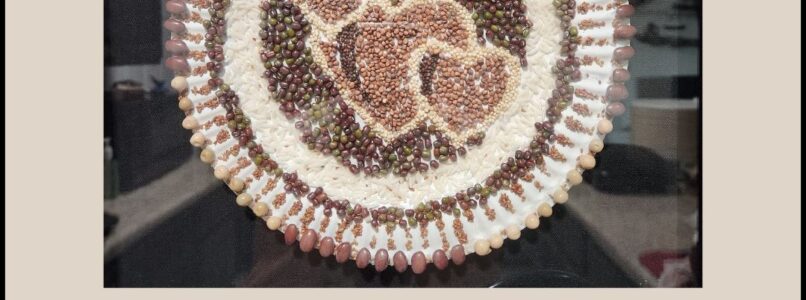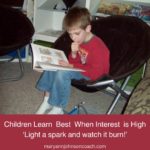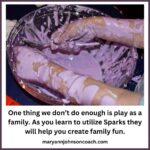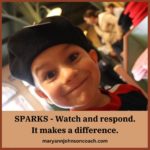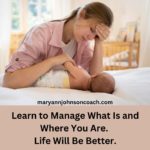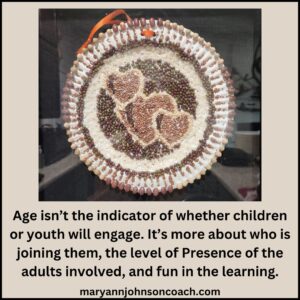 Last week I shared a few examples of how useful and fun seeing and responding to your children’s Sparks can be.
Last week I shared a few examples of how useful and fun seeing and responding to your children’s Sparks can be.
Let’s quickly review what a Spark is.
What Is a Spark
A Spark is anything that a child says or does that lets you know they’re interested in something right now.
But to engage our kids and help them learn new things we don’t need to wait for their Sparks. When it comes to learning, we can spark them and then watch a fire of interest take hold. It’s a fine way to engage as a family and to show our children that learning can be fun.
As a reminder, we see Sparks best when we’re Present with our kids. Being Present is hard to do when we’re stuck in family management or technology.
In 2020, during COVID-19, school resumed in August for two days a week. Some online school happened but this left a lot of unstructured time. It was difficult for parents and children. I wrote an article about The Spark Station, a tool I had taught to homeschool families years before. The article illustrated how getting kids interested in learning something new would work for any parent, regardless of how their children were educated. At the time, the Spark Station was a closet shelf or container with interesting items inside.
After that article, time passed and the Spark Station grew to include the whole house, not just a closet shelf. I showed parents how to treasure hunt their homes because our homes are filled with items that interest children. With a bit of thought and new eyes, as you tour each room in your home, you will see what you haven’t seen before. That knowledge prepares you for cool family nights and a child’s boring Saturday afternoon.
With only what you find in your home, you can give your children experiences that teach them that learning doesn’t need to be boring but can happen in fun and exciting ways, anywhere. This is useful for children to experience and internalize so they won’t become stagnant in their desire to learn as they become busy adults.
When I did a treasure hunt of my home, I found exciting items in my kitchen. I used them with my grands and we had a ball connecting and learning together.
From My Kitchen List
As I opened every cupboard and closet, I noticed items I had seen used in interesting ways and I wrote them on my list. The fourth item was assorted macaroni, peas, dried beans, and lentils. I had helped my children create wonderful collages and works of art back in the day. The collage photo at the top of this article was created by my youngest daughter Kate when she was a pre-teen. Yes, she was that old. She spent a lot of time on it. This piece hangs in my kitchen today and is over twenty years old. It often surprises me what a preteen or teen will engage in when it’s part of a family event. A few years ago, we did this activity at our family reunion. You would have been surprised to see how many children, youth, and adults became involved.
A collage could include newspaper clippings, ribbon, bits of colored paper, portions of other artwork, photographs, a piece of moss, and other found objects, glued to a piece of paper or canvas. Here is how the learning part works: While everyone is engaged you share information like this – You know, a collage is a work of formal art, made by assembling different things to create something new. You could then show some works of art by famous people on your computer or phone. Here are some artists that have done collages; Pablo Picasso, Georges Braque, Juan Gris, Henri Matisse, and Cecil Touchon.
When I googled “children’s collages” a magnificent array of great work by children came up. It would be worth printing some in color to show your children what wonderful things they could make.
Remember the admonition to let children “do”. We are often invested in how it looks when finished so we help our kids too much. We want the pictures on the walls so that they are aesthetically pleasing. Your child may not care about that. Maybe they want it at their eye level or in an odd place. If it is in their room, why not let that go? Are you interested in being in “House Beautiful” or allowing your children to think, decide, and experience, in other words, learn?
More Items On My Kitchen List
The second and third items on my kitchen list were soda and vinegar. Most of you have probably seen or heard of making a volcano by mixing soda and vinegar. One family I know made a wonderful bubbling swamp. They had a great time but when the kids asked why it did what it did no one was prepared to answer. Parents need to be students too. You can find information on just about anything on the internet.
If part of our purpose in family activities is to engender learning while having fun, then we need to be able to answer questions or lead our kids to find the answers for themselves. If we’re in a project and there aren’t any questions, we can engage in conversation. Ask questions – Do you know what I discovered…Can you believe…How do you think that happened…What do you think would happen if…and so forth. That’s why we need to stay present; that is what makes a family activity a learning activity.
I helped some of my grands make a volcano and I had to do some homework, so I knew what caused the reaction. I was able to give them interesting bits of information. Not only was the project fun, but they also liked knowing the whys.
If this activity Sparks one of your children, there are other ways that you can see this chemical reaction happen. You can help them chase their new spark.
1. Vinegar & Baking Soda Foam Fight
2. Build a Volcano
3. Propelling a Rocket
4. Make a Bubble Bomb
In the volcano project, as an example, we could increase learning by having a book on Pompeii handy, maybe some pictures and articles on the Mount St. Helens eruption, or the eruption in Iceland in 2010.
If you have older children, they might be interested in seeing a Periodic Table. Help them write out what the chemical reaction would look like using the table. I couldn’t remember what the Periodic Table was called so I typed “chemistry chart” in the search bar and voila! Let me also say that I never took chemistry, but that didn’t stop me from introducing my grands to it. I can learn what I need via the Internet!
Do you see how a few simple items and a bit of thought and time can give your children opportunities for wonder, fun, and learning?
This photo is of my grands making their volcano on the patio. Their ages ranged from four to around nine. However, I also helped a grand over twelve do something similar for a school project and another for a science fair event. Age isn’t the indicator of whether children or youth will engage. It’s more about who is joining them, the level of Presence of the adults involved, and fun in the learning.
nine. However, I also helped a grand over twelve do something similar for a school project and another for a science fair event. Age isn’t the indicator of whether children or youth will engage. It’s more about who is joining them, the level of Presence of the adults involved, and fun in the learning.
Use your family time or a boring Saturday afternoon to help your children experience the joy of learning by responding to or creating a Spark.

